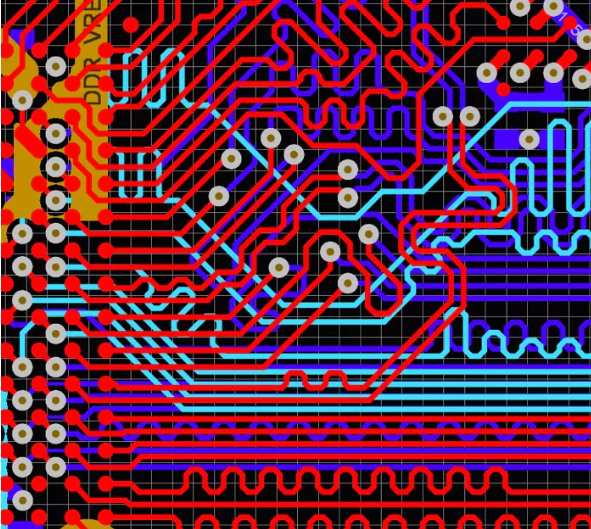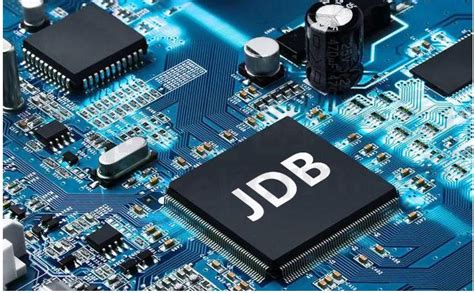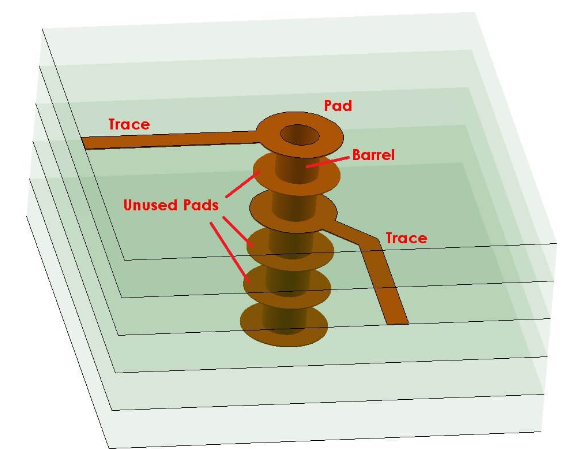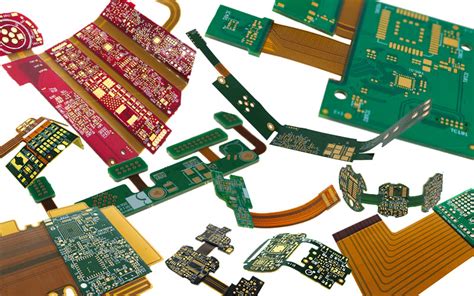Streamlined Flex Circuit Fabrication for Modern Electronics Design
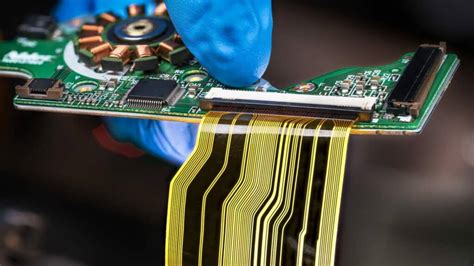
Key Takeaways
Understanding the PCB manufacturing process is crucial when working with flexible circuits, as it directly impacts performance and reliability. Modern PCB manufacturing companies leverage advanced techniques to balance precision with scalability, ensuring your designs meet both technical and budgetary demands. For instance, optimizing trace widths and material selection can reduce PCB manufacturing cost by up to 30% while maintaining durability in high-flex applications.
"Collaborating with experienced PCB manufacturing business partners ensures your flex circuits align with industry standards like IPC-6013, minimizing risks in high-stakes applications."
Here’s a comparison of key factors in flex circuit production:
| Factor | Traditional Rigid PCBs | Flexible Circuits |
|---|---|---|
| Assembly Cost | Higher (multi-part) | Lower (integrated) |
| Weight | 15-20% heavier | Ultra-lightweight |
| Integration | Limited by connectors | Seamless layer stacking |
By prioritizing customizable bendable PCB technology, you unlock solutions that streamline assembly and reduce material waste. For example, innovative adhesive-free laminates enable thinner designs without compromising signal integrity. This approach not only accelerates prototyping but also scales efficiently for mass production.
Tip: Always validate your design’s bend radius and thermal requirements early to avoid costly revisions. Partnering with specialists in PCB manufacturing ensures your flex circuits meet both functional and economic goals.

Flex Circuit Fabrication Design Optimization
When optimizing flex circuit designs, you need to balance performance with PCB manufacturing realities. By prioritizing dynamic bend radius calculations and material stack-up symmetry, you ensure reliability while minimizing PCB manufacturing cost. Leading PCB manufacturing companies recommend integrating design for manufacturing (DFM) principles early—like avoiding sharp angles in copper traces—to reduce fabrication errors and delays.
Advanced simulation tools help predict stress points in flexible circuits, allowing you to refine layouts before engaging a PCB manufacturing business. This proactive approach cuts prototyping cycles by up to 30%, as adjustments are made digitally rather than through physical trials. Additionally, selecting thinner polyimide substrates or adhesive-free laminates can enhance flexibility without compromising durability, a critical factor for applications like wearable tech or foldable displays.
Collaboration with your fabrication partner is key. Share detailed thermal expansion coefficients and mechanical load requirements to align design choices with production capabilities. For instance, specifying laser-drilled microvias instead of mechanical drilling reduces PCB manufacturing complexity for high-density interconnects. By merging design innovation with pragmatic PCB manufacturing strategies, you create circuits that perform seamlessly in compact, dynamic environments while keeping project budgets predictable.

Customizable Bendable PCB Technology Benefits
When designing compact or irregularly shaped electronics, bendable PCB technology allows you to overcome spatial limitations while maintaining signal integrity. Unlike rigid boards, these circuits adapt to dynamic design requirements, enabling tighter integration in wearables, medical devices, or aerospace systems. By adopting customizable flex circuits, you gain control over layer counts, substrate materials, and bend radii—critical factors that influence PCB manufacturing cost and performance longevity.
Leading PCB manufacturing companies now leverage advanced processes like laser ablation and roll-to-roll etching to produce high-density interconnects at scale. This precision reduces material waste by up to 30%, directly lowering production expenses for your PCB manufacturing business. Additionally, the ability to combine rigid and flexible sections in a single board simplifies assembly, eliminating connectors that add weight and failure points.
For applications demanding lightweight durability—such as IoT sensors or foldable displays—bendable PCBs offer unmatched versatility. Their thin profiles and resistance to vibration make them ideal for environments where traditional boards falter. By aligning your designs with modern PCB manufacturing capabilities, you unlock solutions that balance complexity, reliability, and cost-efficiency without compromising on innovation.
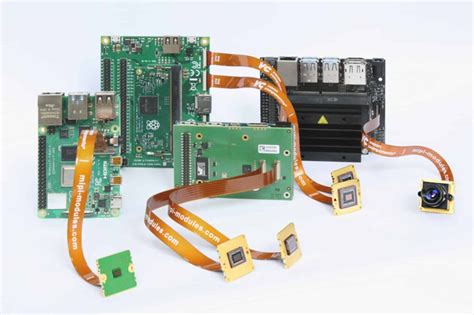
Seamless Integration in Electronics Architecture
When designing modern devices, achieving seamless integration often hinges on how well components adapt to constrained spaces. PCB manufacturing processes for flexible circuits enable bendable layouts that conform to complex geometries, eliminating bulky connectors and rigid board limitations. By collaborating with specialized PCB manufacturing companies, you gain access to tailored solutions that merge high-density interconnects with dynamic form factors—critical for wearables, medical devices, or aerospace systems where every millimeter counts.
The PCB manufacturing cost for flexible designs can initially appear higher than traditional boards, but long-term savings emerge through simplified assembly and reduced material waste. Advanced PCB manufacturing business models now prioritize scalability, offering prototyping-to-mass-production continuity that accelerates time-to-market. For instance, integrating flex circuits into foldable displays or IoT sensors reduces the need for multiple rigid boards, streamlining both thermal management and signal integrity.
This architectural shift demands precision in material selection and layer stacking—factors where experienced manufacturers excel. By aligning your design goals with flexible PCB capabilities, you create systems where functionality and physical layout evolve in tandem, unlocking new possibilities for miniaturized, high-performance electronics.
Reducing Assembly Costs With Flexible Circuits
By adopting flexible circuits in your designs, you directly address one of the most persistent challenges in PCB manufacturing: balancing performance with PCB manufacturing cost. Traditional rigid boards often require connectors, wires, and additional components to fit into complex geometries, driving up assembly time and labor expenses. In contrast, bendable PCB technology eliminates these intermediaries, enabling seamless integration of circuits into compact or irregular spaces. This simplification reduces the number of parts needed, slashing material costs and minimizing errors during assembly.
Leading PCB manufacturing companies have observed that flexible circuits can lower total system costs by up to 30% compared to conventional setups. The inherent durability of flex materials also reduces the risk of failure during installation, further cutting downtime and rework expenses. For businesses scaling their PCB manufacturing business, this translates to faster production cycles and higher profit margins.
Moreover, flexible circuits allow you to consolidate multiple rigid boards into a single, lightweight unit. This consolidation not only trims PCB manufacturing cost but also streamlines supply chain logistics, as fewer components need sourcing and inventory management. By prioritizing design optimization early in the process, you ensure that every bend and fold aligns with both functional requirements and budget constraints—a critical advantage in competitive electronics markets.
Lightweight Solutions for Next-Gen Applications
When designing cutting-edge electronics, reducing weight isn’t just an advantage—it’s a necessity. Flexible circuits excel here, offering ultra-thin profiles and material efficiency that traditional rigid PCB manufacturing can’t match. By integrating bendable substrates like polyimide, these circuits eliminate bulky connectors and wiring, slashing weight by up to 70% in applications like wearables, drones, and medical implants.
Leading PCB manufacturing companies leverage advanced techniques—such as laser ablation and roll-to-roll processing—to produce circuits that maintain durability without compromising on mass. This precision ensures seamless compatibility with high-density components, critical for IoT devices and aerospace systems where every gram impacts performance.
Balancing PCB manufacturing cost with performance is key. Flexible circuits reduce assembly steps, lowering labor and material expenses over time. For startups or established PCB manufacturing businesses, this scalability makes lightweight solutions economically viable even for low-volume, high-mix production.
As industries push for greener technologies, the shift toward lightweight designs aligns with sustainability goals. By minimizing material waste and energy use during fabrication, flex circuits not only meet technical demands but also support eco-conscious innovation—a dual advantage for next-gen electronics.
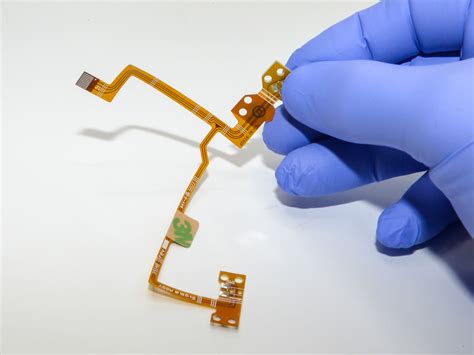
Precision Flex Circuit Manufacturing Techniques
When designing modern electronics, achieving consistent precision in flex circuit fabrication requires balancing advanced techniques with cost-effective practices. Leading PCB manufacturing companies employ laser direct imaging (LDI) and automated optical inspection (AOI) to ensure micron-level accuracy in trace patterning, critical for high-frequency or dynamic bending applications. These methods minimize errors that could escalate PCB manufacturing costs during scaling, while enabling tighter tolerances for complex multilayer designs.
Material selection plays a pivotal role—polyimide substrates, for instance, offer thermal stability for aerospace or medical devices, whereas adhesive-free laminates reduce thickness in wearables. To maintain competitiveness in the PCB manufacturing business, firms integrate roll-to-roll processing for high-volume production, slashing material waste by up to 30%. Advanced plating techniques, like electroless nickel immersion gold (ENIG), further enhance durability without compromising flexibility.
For seamless integration, manufacturers collaborate closely with design teams to optimize layouts for stress relief in bend zones, preventing delamination. By leveraging these precision strategies, you not only meet stringent performance demands but also unlock economies of scale—a key advantage when partnering with agile PCB manufacturing providers.
Innovations in Modern Flex PCB Fabrication
Recent advancements in PCB manufacturing have redefined how engineers approach flexible circuit design. By leveraging laser direct imaging (LDI) and ultra-thin substrates, leading-edge PCB manufacturing companies now produce bendable circuits with tolerances under 25µm—ideal for wearables and aerospace systems. These innovations directly address PCB manufacturing cost challenges, as automated optical inspection (AOI) systems minimize material waste while ensuring 99.9% yield rates.
What sets modern fabrication apart is its synergy with modular design principles. Instead of rigid layouts, you can integrate foldable sections and dynamic interconnects, slashing assembly steps by up to 40%. This flexibility isn’t just physical; it’s economic. By partnering with PCB manufacturing business specialists, you gain access to scalable production models—whether prototyping low-volume medical sensors or mass-producing automotive control modules.
Emerging materials like liquid crystal polymer (LCP) further enhance performance, offering heat resistance and signal integrity at frequencies above 20GHz. These breakthroughs ensure your designs stay ahead of evolving standards like 5G and IoT connectivity, all while maintaining the lightweight advantages inherent to flex circuits.
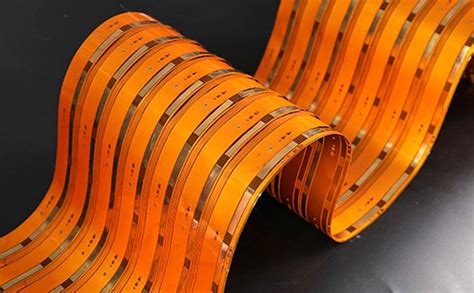
Streamlining Electronics Design With Flex Circuits
When integrating flex circuits into your electronics architecture, you gain access to design workflows that eliminate traditional constraints. Unlike rigid PCB manufacturing, flexible alternatives enable three-dimensional routing and dynamic form factors, allowing you to consolidate multiple components into a single, bendable unit. This reduces reliance on connectors and interposers, which often inflate PCB manufacturing costs and complicate assembly. By collaborating with specialized PCB manufacturing companies, you can optimize material selection—such as polyimide substrates or adhesive systems—to balance durability with flexibility while maintaining signal integrity.
Modern PCB manufacturing business models now prioritize rapid prototyping for flex circuits, letting you test iterations faster and refine designs before full-scale production. This agility is critical for applications like wearables or IoT devices, where space efficiency and weight reduction directly impact performance. Additionally, advanced techniques like laser ablation and automated optical inspection (AOI) ensure precision in trace patterning, minimizing errors that could derail timelines. The result? A streamlined design process that accelerates time-to-market while cutting PCB manufacturing cost through material efficiency and reduced labor. By embracing these innovations, you position your projects at the forefront of adaptable, high-performance electronics.
Conclusion
As you evaluate PCB manufacturing strategies for modern electronics, integrating flex circuit fabrication becomes critical to maintaining competitive agility. Partnering with specialized PCB manufacturing companies ensures access to advanced techniques that balance PCB manufacturing cost with performance demands. By leveraging bendable PCB technology, you unlock scalable solutions for lightweight, high-density designs while streamlining assembly workflows—factors that directly impact your PCB manufacturing business’s bottom line.
The shift toward flexible circuits isn’t merely a trend but a necessity for applications requiring durability and space efficiency. Whether optimizing signal integrity in wearables or enabling compact designs in aerospace, precision-driven fabrication ensures reliability under dynamic conditions. To stay ahead, prioritize suppliers who blend innovation with cost transparency, as this alignment will define your ability to deliver next-generation electronics without compromising margins. Ultimately, the right PCB manufacturing approach transforms design constraints into opportunities for innovation.
Frequently Asked Questions
How does flex circuit fabrication differ from traditional PCB manufacturing?
Flex circuits use bendable substrates instead of rigid materials, enabling tighter integration in compact designs. While PCB manufacturing companies follow similar processes like etching and layering, flex fabrication requires specialized materials and handling to maintain durability during bending.
What factors influence PCB manufacturing cost for flexible circuits?
Costs depend on layer count, material type (e.g., polyimide), and precision requirements. High-density interconnects or custom shapes may raise expenses, but bulk orders with trusted PCB manufacturing partners often reduce per-unit pricing through optimized workflows.
Can flexible circuits truly lower assembly costs in production?
Yes. By consolidating multiple rigid boards into a single flex design, you eliminate connectors and simplify assembly steps. This reduces labor and material overhead, making PCB manufacturing business models more scalable for high-volume projects.
Are there limitations to customizable bendable PCB technology?
While flexible circuits excel in dynamic applications, extreme bend radii or repeated flexing can stress materials. Working with experienced PCB manufacturing companies ensures designs meet mechanical and electrical reliability standards for your use case.
Ready to Explore Flexible PCB Solutions?
For tailored guidance on optimizing your PCB manufacturing process, please click here to connect with experts who specialize in high-performance flex circuit fabrication.


